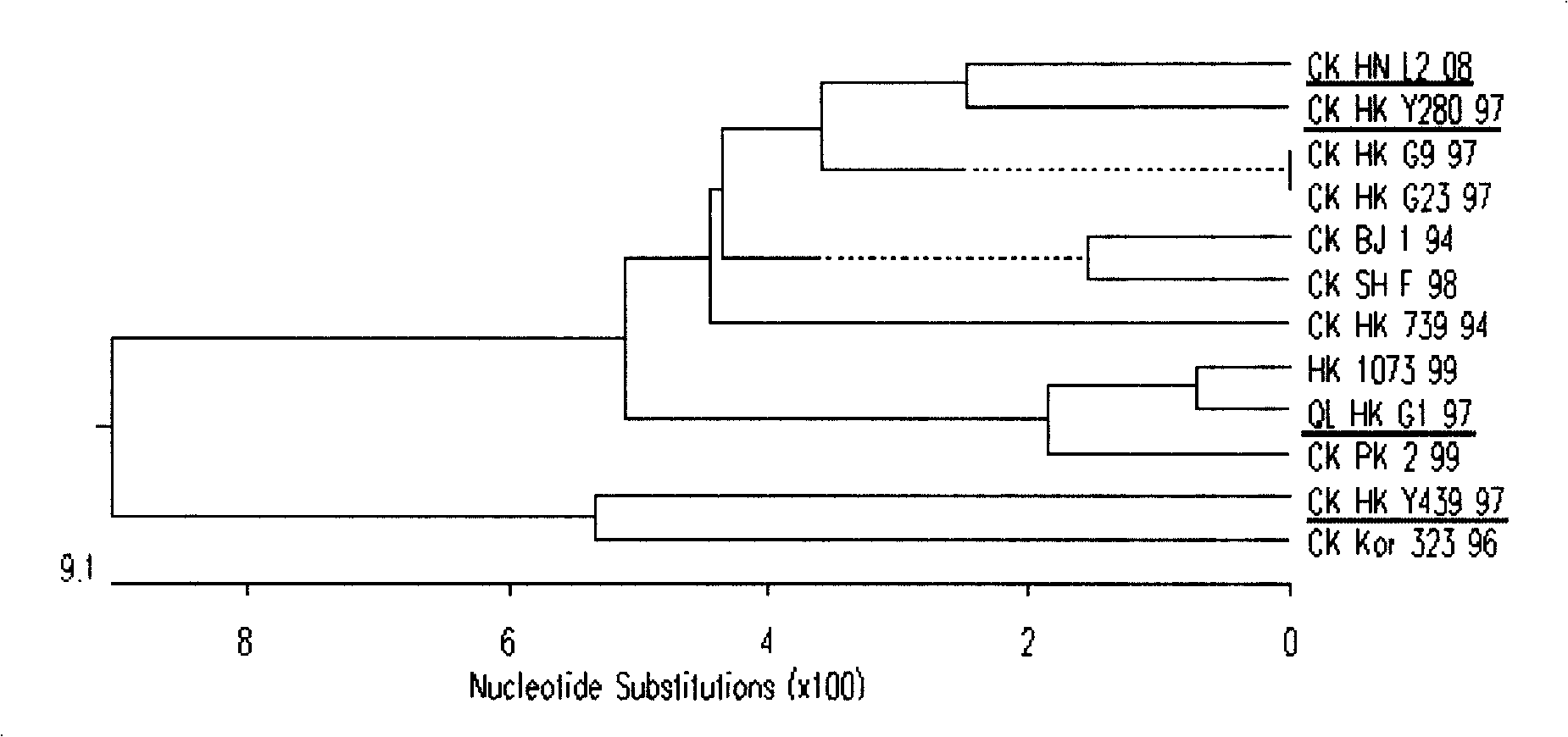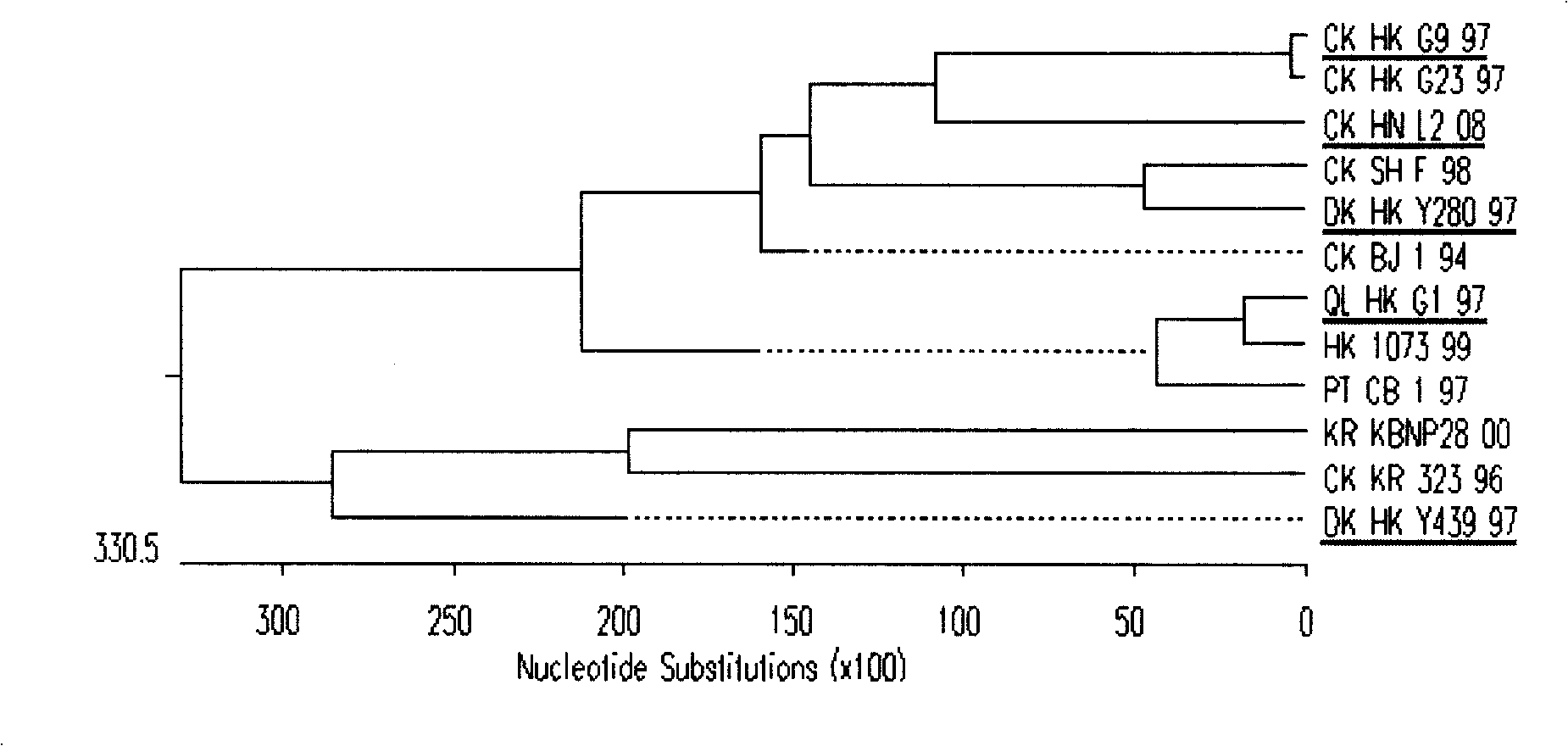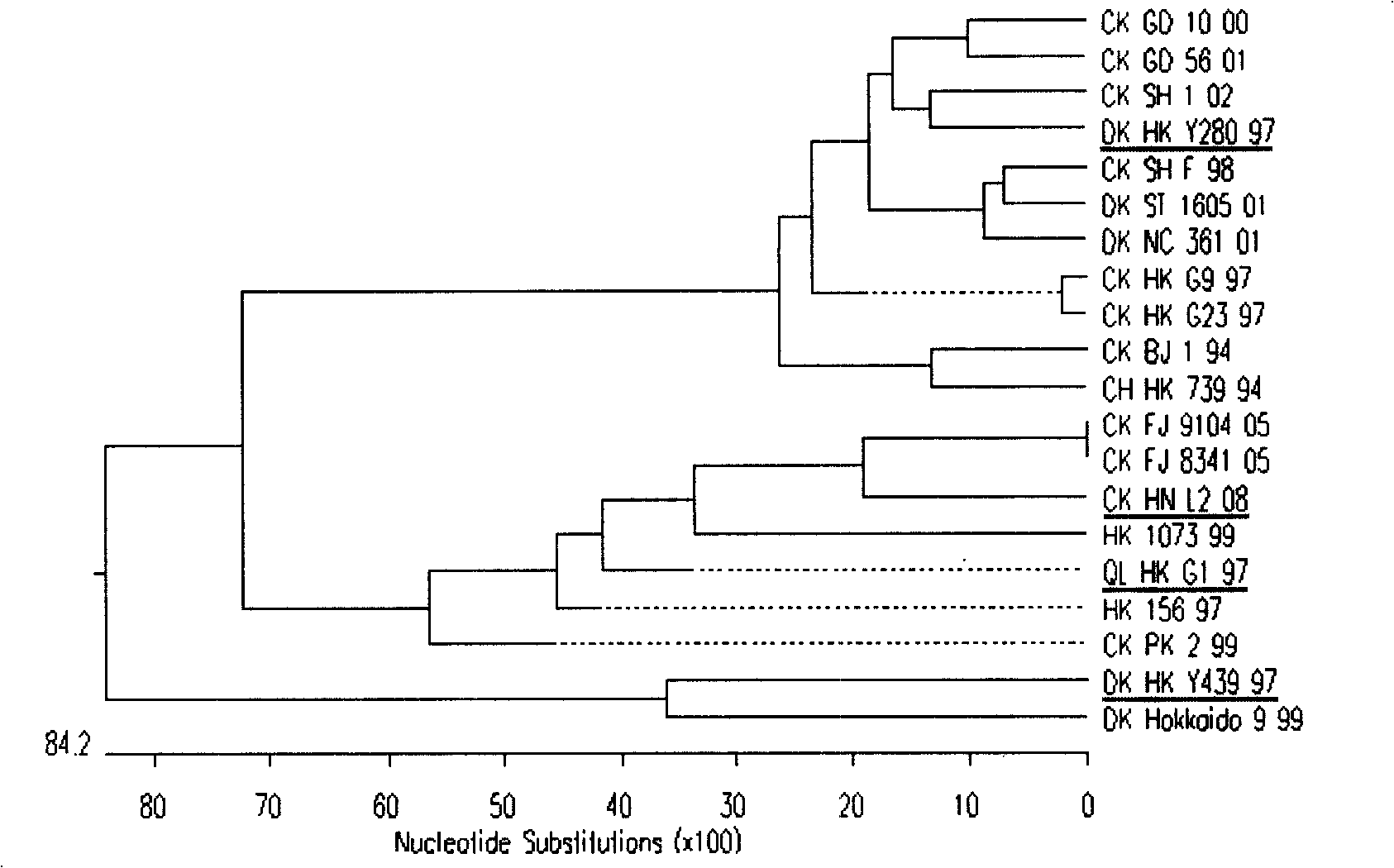Separation identification and purification process for chicken source H9N2 avian influenza virus strain and uses thereof
A technology of bird flu virus, strain, applied in the field of animal virology
- Summary
- Abstract
- Description
- Claims
- Application Information
AI Technical Summary
Problems solved by technology
Method used
Image
Examples
Embodiment 1
[0028] Virus isolation and identification
[0029] A recombinant chicken source H9N2 avian influenza virus strain A / Chicken / Henan / L2 / 2008 (H9N2), the isolation and identification methods of the virus are as follows:
[0030] 1. Treatment of disease materials and inoculation of chicken embryo allantoic cavity
[0031] Take the internal organs (liver, kidney, spleen, etc.) of the diseased chicken and add sterilized saline to grind into a homogenate, freeze and thaw 3 times, centrifuge at 8000 revolutions per minute (rpm) for 10 minutes, discard the upper layer of fat, and absorb the middle liquid . Add penicillin and streptomycin and treat at 4°C for 1 hour, centrifuge again at 8000 rpm for 10 minutes, take the supernatant and inoculate 11-day-old SPF chicken embryos through the allantoic cavity, 0.2ml / piece, and culture them in an incubator for 72 hours. Observe twice a day, discard the contaminated embryos within 24 hours, and collect the allantoic fluid of the remaining chi...
Embodiment 2
[0041] Viral HA antigenicity analysis
[0042] experimental method:
[0043] 1. Preparation of H9 single-factor serum
[0044] Eleven isolated strains of H9N2 subtype AIV and A / Chicken / Henan / L2 / 2008 involved in the present invention were used to prepare oil emulsion inactivated vaccines respectively. The one-month-old SPF chickens were immunized with the above vaccines, and raised in an isolated feeder to prepare single-factor serum. A total of two immunizations were performed with an interval of 2 weeks. Blood was collected 14 days after the second immunization, and positive serum was prepared respectively.
[0045] 2. Crossover HI test
[0046] Using the above-mentioned 12 strains of viruses as antigens, 4 units of viruses were prepared respectively, and the cross-HI test was carried out with the above-mentioned 12 kinds of single-factor sera to detect the reactivity of the HA antigens of these H9N2 viruses. Experiments were repeated three times. The average value of th...
Embodiment 3
[0059] Determination of the whole genome sequence of the virus
[0060] experimental method:
[0061] 1. Synthesis of RT-PCR primers
[0062] Referring to the published H9 subtype AIV sequence data, RT-PCR primers for 8 gene segments (PB2, PB1, PA, HA, NA, NP, M, NS) of the AIV genome were designed and synthesized (see Table 2).
[0063] Table 2 Primer sequences for amplification of each gene fragment of avian influenza virus
[0064]
[0065]
[0066] 2. Extraction of viral RNA
[0067] Toxic chick embryo allantoic fluid was used as the material for RNA extraction, and the operation was performed according to the instructions of the Trizol kit (Invitragen).
[0068] 3. RT-PCR of each gene
[0069] Using TAKARA's PrimeScript TM One Step RT-PCR Kit, the reaction system is 50ul: RNase FreedH 2 O 30.5 μl, 10×Buffer 5 μl, Enhancer Solution 1 μl, dNTP Mixture 2 μl, RNase Inhibitor 1 μl, PrimeScript TM RTase 0.5 μl, EX Taq TM HS 1 μl, RNA sample 6 μl, upstream and down...
PUM
 Login to View More
Login to View More Abstract
Description
Claims
Application Information
 Login to View More
Login to View More - R&D
- Intellectual Property
- Life Sciences
- Materials
- Tech Scout
- Unparalleled Data Quality
- Higher Quality Content
- 60% Fewer Hallucinations
Browse by: Latest US Patents, China's latest patents, Technical Efficacy Thesaurus, Application Domain, Technology Topic, Popular Technical Reports.
© 2025 PatSnap. All rights reserved.Legal|Privacy policy|Modern Slavery Act Transparency Statement|Sitemap|About US| Contact US: help@patsnap.com



